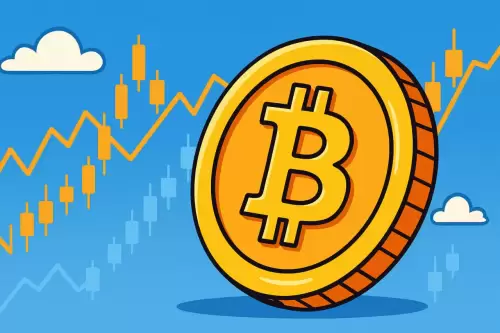 |
|
 |
|
 |
|
 |
|
 |
|
 |
|
 |
|
 |
|
 |
|
 |
|
 |
|
 |
|
 |
|
 |
|
 |
|
Cryptocurrency News Articles
Open Banking APIs Generated $57 Billion in Global Transactions in 2023, Proving Their Essential Role
May 19, 2025 at 07:17 pm
Financial institutions worldwide are now embracing APIs as the building blocks of modern banking. These digital connectors are changing the way financial services operate

Open banking APIs are rapidly transforming the financial services landscape, and they’re set to play an increasingly critical role in the years ahead. In 2023 alone, these digital connectors generated an impressive $57 billion in global transactions, a testament to their impact on today’s diverse fintech ecosystem.
This level of activity shows just how quickly consumers are integrating fintech solutions into their daily lives. Statistics from the U.S. show that 88% of consumers now use at least one fintech service.
When financial institutions collaborate with third-party providers through the secure framework of open banking APIs, they build a synergistic ecosystem where both consumers and businesses reap benefits. These collaborations are governed by exacting standards that ensure data moves safely between parties, and proper integration helps banks maintain optimal security measures while still opening their doors to innovation.
As the fintech industry continues its remarkable ascent—anticipating an industry revenue of $1.5 trillion annually by 2030—scalability and security become paramount. These factors will be pivotal in sustaining the industry's high growth trajectory.
Despite the widespread discussion of open banking, there are still significant security hurdles to overcome in its implementation. Banks and financial institutions face a delicate balancing act: how do you innovate relentlessly while keeping security measures extremely robust? The challenge lies in protecting customer data with the utmost diligence while still making it accessible through the proper channels.
However, the introduction of Strong Customer Authentication (SCA) under PSD2 regulations has made a substantial difference. Compared to outdated methods like screen scraping, which were largely used before 2020 and rendered many aggregators useless, today's technology offers a vast improvement in fraud risks.
This guide will take a comprehensive look at building secure and compliant open banking APIs for 2025 and beyond. We'll cover establishing secure endpoints using industry standards like FDX, setting up optimal authentication flows with OAuth 2.0, creating positive developer experiences with best practices, and designing systems that can evolve with changing regulations and technologies.
Let's delve into what makes open banking work securely and optimally at scale.
Understanding Open Banking APIs and Their Role in Fintech
Financial institutions around the world are increasingly adopting APIs as fundamental building blocks of modern banking in today’s fast-moving fintech landscape. These digital connectors are altering the way financial services operate, interact and innovate.
What Are Open Banking APIs and Their Purpose?
Open banking APIs are essentially digital gateways that third-party developers can use to build applications around existing financial systems. They form standardized and secure channels for data exchange between banks and authorized third parties. In essence, these APIs create a technical framework that enables financial data to flow seamlessly and securely with proper customer permission.
Open banking APIs fulfill several key purposes, which are interconnected to create a broader ecosystem of services. These APIs can be categorized into various types, each serving a specific function in the integration process.
Data APIs: These APIs provide read-only access to account information, including balances, transaction history, and other relevant financial data. Third-party developers can use this access to build applications that analyze customer spending habits, generate personalized financial reports, or offer budgeting assistance.
Transaction APIs: These APIs enable third parties to initiate transactions on behalf of customers with their consent. For instance, an e-commerce platform could use a transaction API to collect payment from a customer directly into their bank account in a single, seamless step.
Product APIs: These APIs allow third parties to list and compare financial products, such as loans, credit cards, and investment products, from multiple institutions. Third-party providers can then use this data to build valuable services like financial product aggregators or personalized recommendations.
The importance of open banking APIs in the financial ecosystem is evident in the latest statistics. In 2023 alone, an estimated $57 billion in transactions were generated by open banking APIs globally. This staggering figure showcases the rapid expansion of fintech solutions as consumers become increasingly engaged.
How APIs Facilitate Consumer-Permissioned Data Sharing
At the heart of open banking lies the concept of consumer-permissioned data sharing. This mechanism allows customers to explicitly authorize third-party providers (TPPs) to access specific types of financial data. The process usually starts with OAuth authorization.
When a customer wishes to use an application from a third-party provider, they are redirected to their bank's authentication system, where they log in and grant the application the desired level of access to their financial data through a clear and concise consent screen. This authorization is typically expressed in terms of OAuth scopes, which specify the types of data or functions that the third party is authorized to use. For instance, a budgeting application might be granted scope to "read" transaction history but not to initiate transfers.
After successful authentication, the bank generates an authorization code and sends it back to the third-party provider through a redirect URL. The third-party provider then uses this code to obtain an access token. This is done by making a secure request
Disclaimer:info@kdj.com
The information provided is not trading advice. kdj.com does not assume any responsibility for any investments made based on the information provided in this article. Cryptocurrencies are highly volatile and it is highly recommended that you invest with caution after thorough research!
If you believe that the content used on this website infringes your copyright, please contact us immediately (info@kdj.com) and we will delete it promptly.




























































